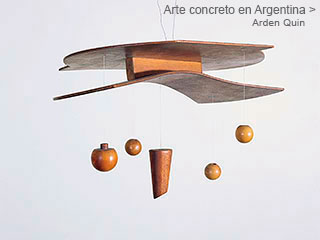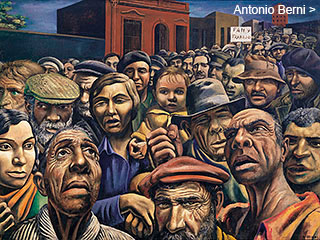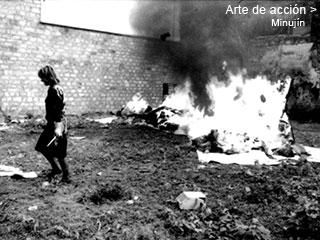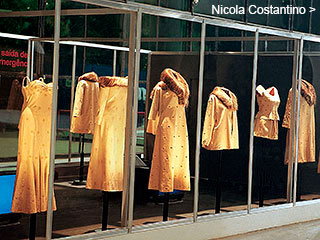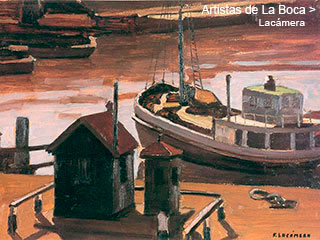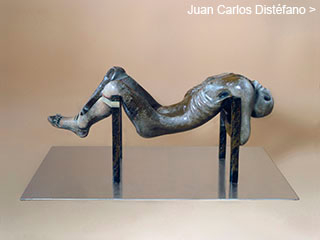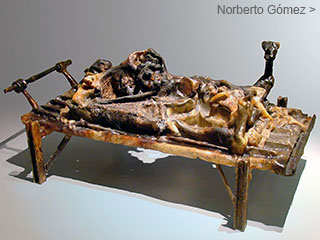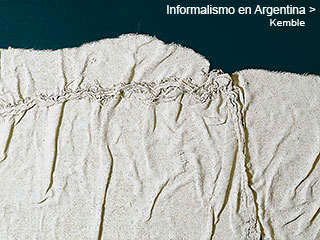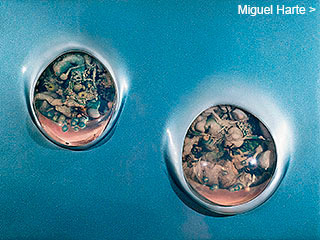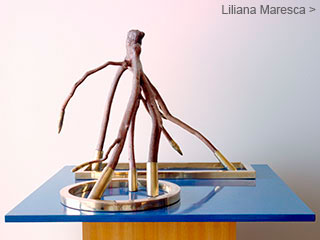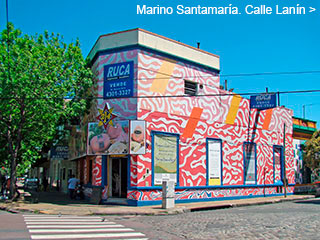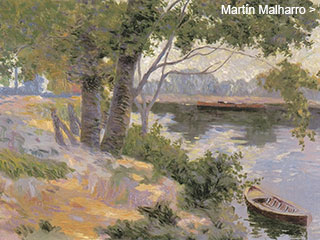Menú
Algunos dossiers
Informalism
in Argentina
in Argentina
by
Jorge López Anaya
August 2003
August 2003
Argentine Informalism incorporated processes which went against the “good taste” of the local practices. Based on the existential poetry of the time, through spontaneous gestures and the use of discarded material, it violated the limits of the traditional artistic genre and opened the road to the concept of the object, the installations and the art of action.
Greco
day due to the bad odor it cast off. As of that exhibit, he started with the “actions” that he called Vivo-Dito. In March 1962, he made his First Exhibition of Live Art in the streets of Paris, by “autographing” people. Afterwards, he did the same at the Antagonismos 2. El objeto (Antagonism 2. The Object Exhibit), which was presented at the Museum of Decorative Art. It was an exhibition of himself as a “sandwich man” with the following legend: “Alberto Greco, a work of art not included in the catalogue”. Also, in Paris he distributed a personal card saying: “Alberto Greco. Objet d’art”.
He published the Manifesto Dito dell’Arte Vivo, in Italian, in Genoa, dated July 29, 1962. Among other things he states:
“Live art is a real adventure. The artist will teach to observe by pointing with a finger and not to a picture. It will teach to see again that which happens in the street. Live art searches for an object but the object found is left in its place, it doesn’t transform it, it doesn’t improve it, it doesn’t take it to an art gallery. Live art is contemplation and direct communication. It wants to end with premeditation which means a gallery and an exhibition. We must allow ourselves to be in direct contact with the live elements of our own reality: movement, time, people, conversations, odors, rumors, places and situations. Live Art, Dito Movement. Alberto Greco”.
Live Art consisted in the action of “signaling out” a particular character and
more


